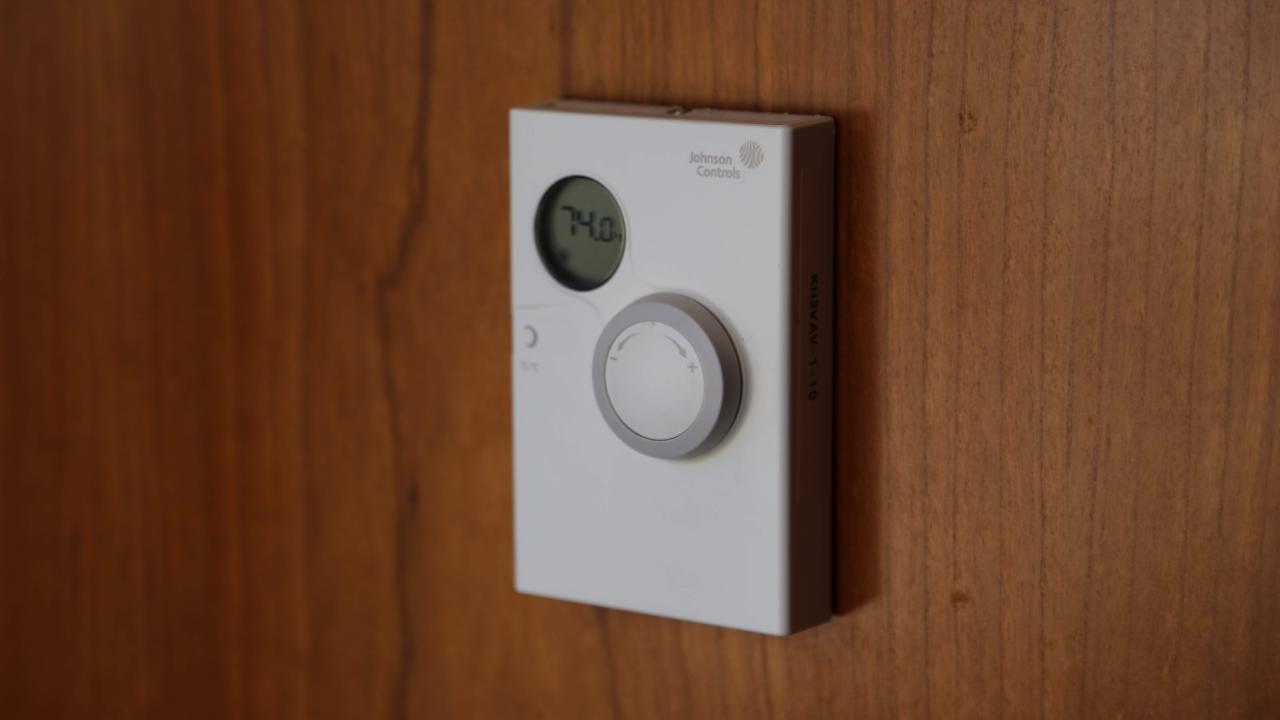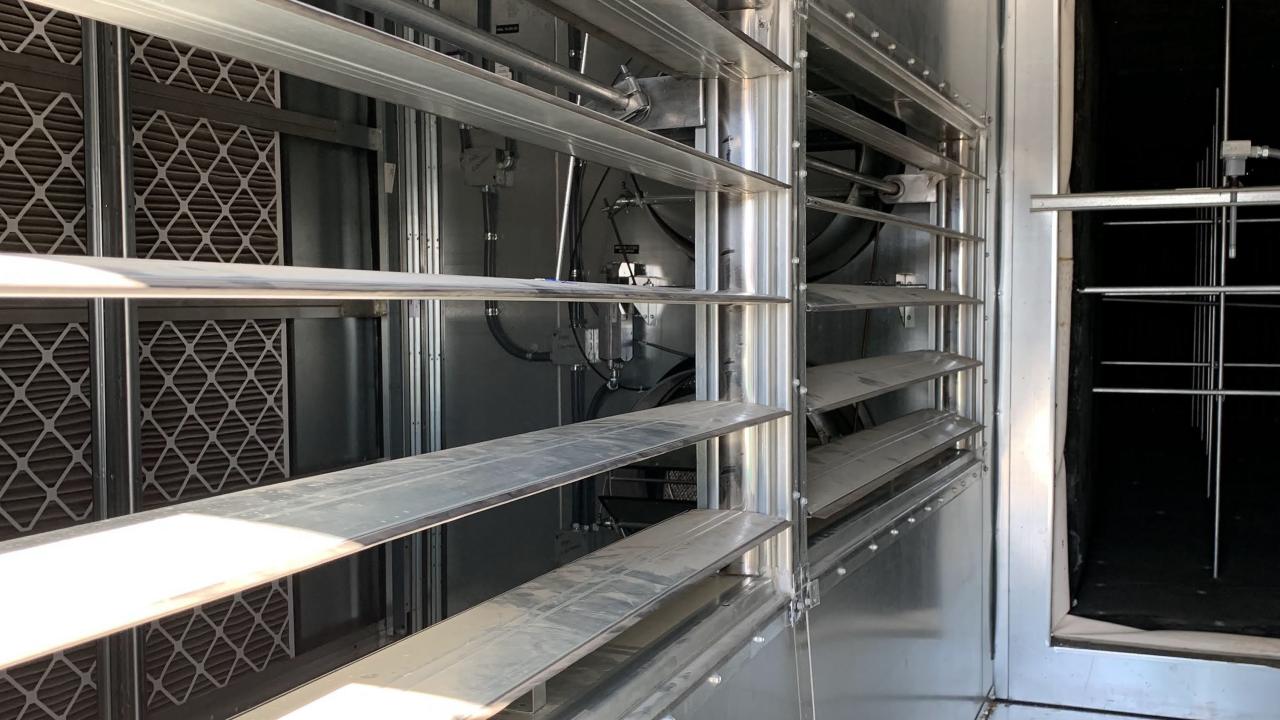What is an HVAC System?
HVAC stands for Heating, Ventilation and Air Conditioning, which describe the functions of an HVAC system. HVAC systems can be found in just about every building in the world, from your house or apartment to the classrooms and labs on campus.
The main function of an HVAC system in a building or home is to maintain a comfortable environment for the occupants. It controls the temperature by heating and cooling the room, and can control the humidity level, and also ventilates a space by distributing air within the room.
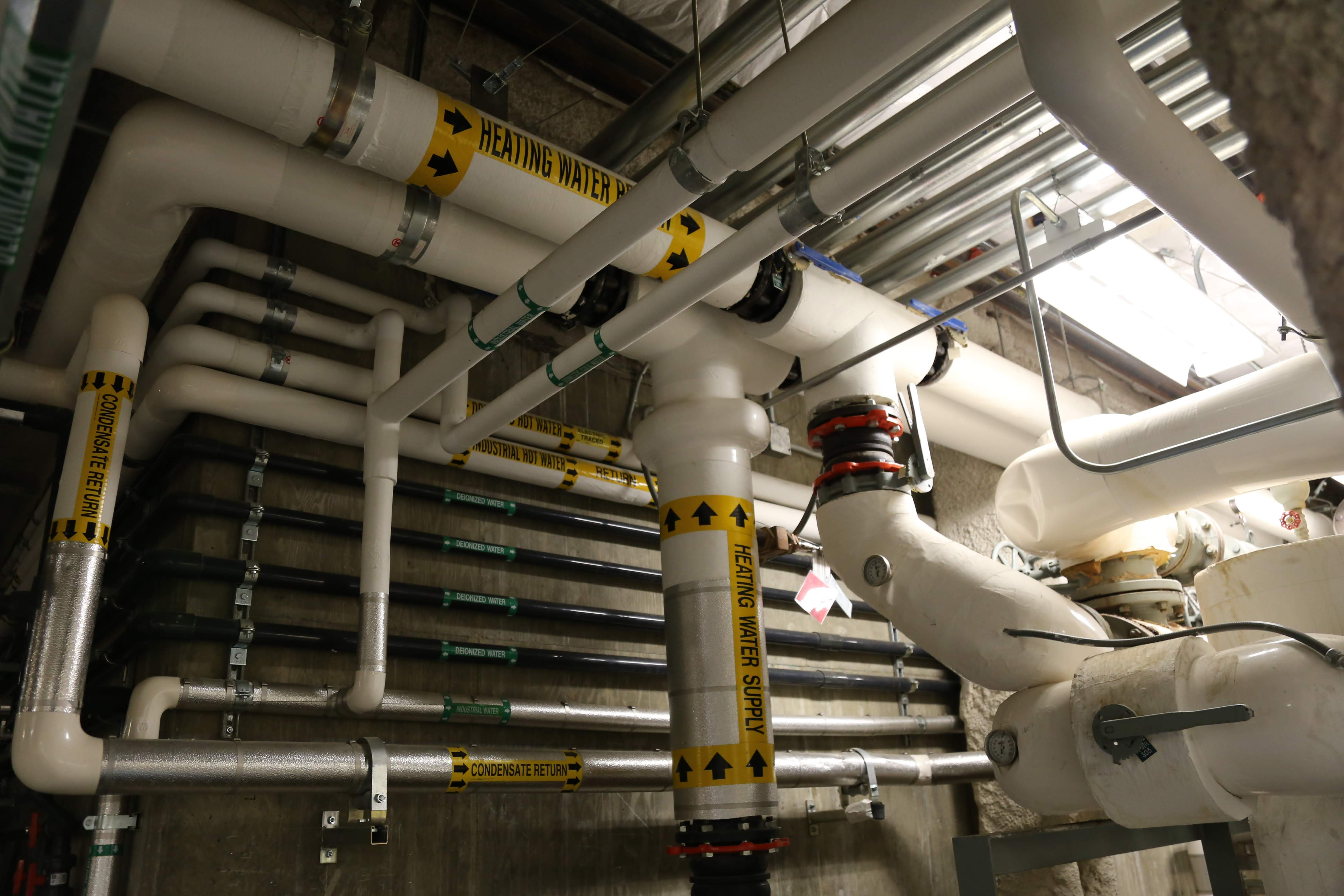
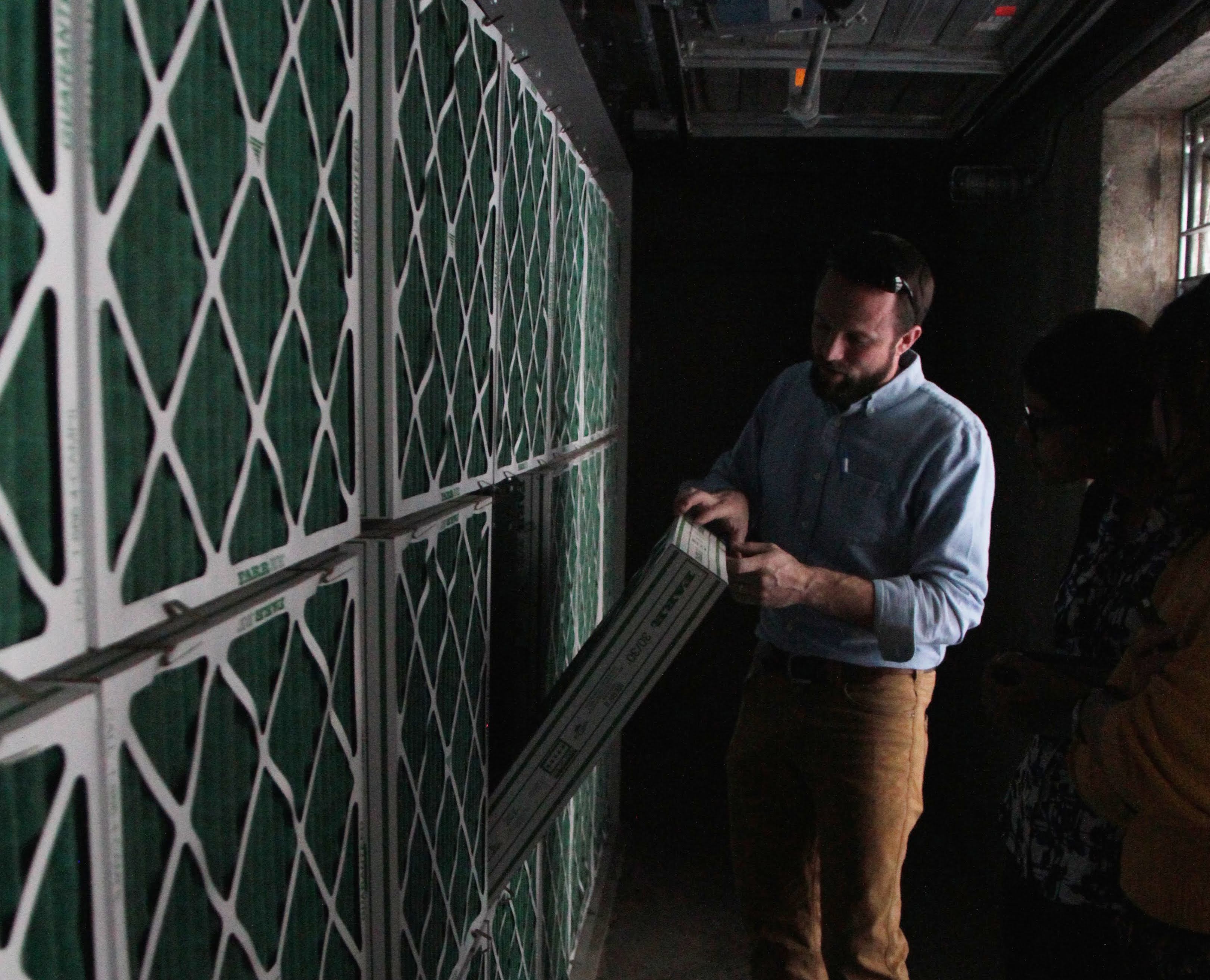
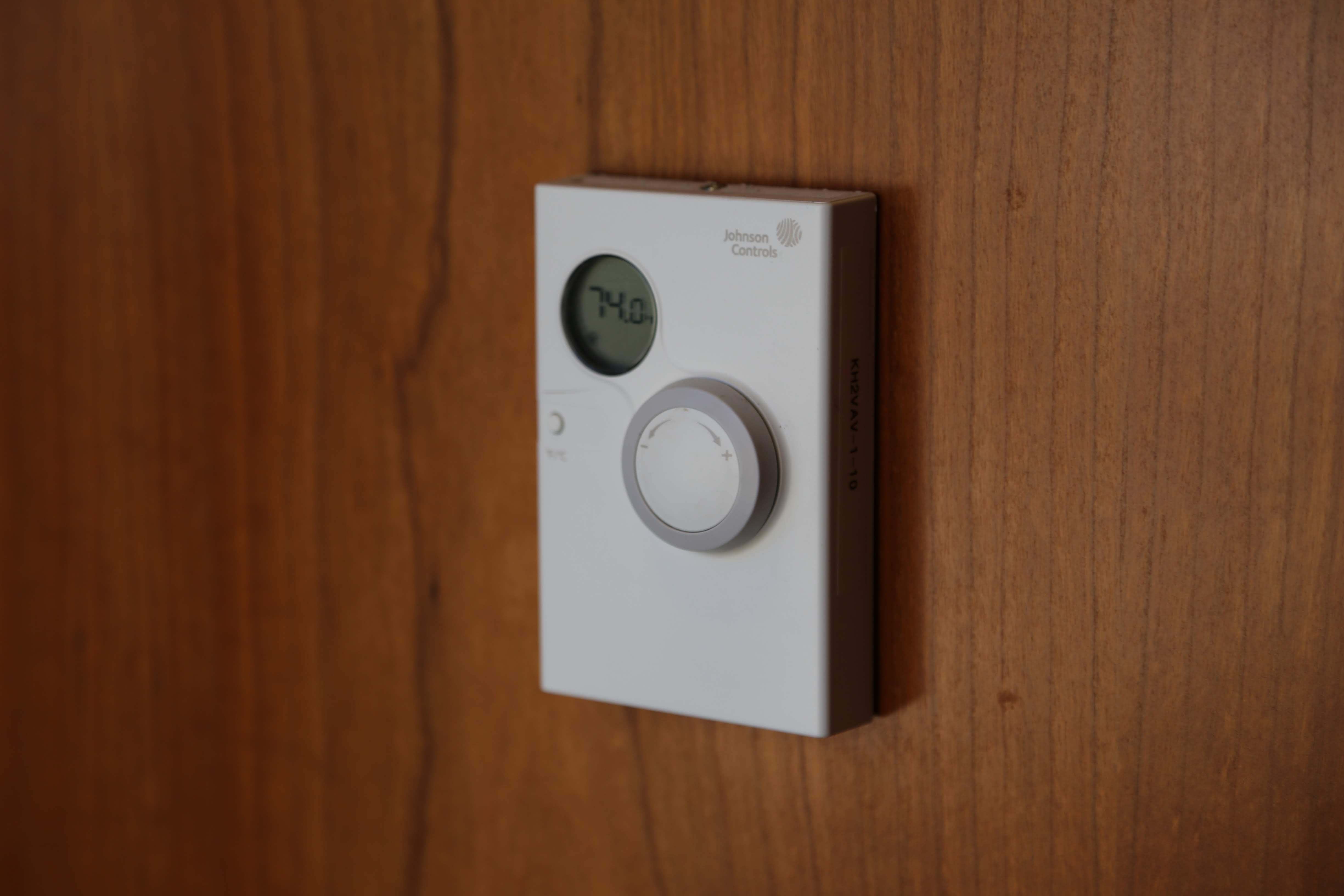
What makes up an HVAC System?
The campus uses electricity and natural gas to make chilled water and steam, respectively. Chilled water and steam are sent to campus buildings via underground pipes, and the air handlers use both to heat or cool outside air before sending it into the building. This conditioned air travels through the building in ducting (sometimes hidden above the ceilings) and enters through the vents you see above, next to, or beneath you.
The campus HVAC systems are responsible for the heating and cooling of our buildings, and they're different from the ones you'd typically see in your home or apartment. The buildings on campus are so big, there is equipment called an air handling unit. These air handlers, along with other mechanical equipment such as fans, dampers, reheat coils, and more, make up the heating, ventilation, and air conditioning systems.
The heating and cooling of a building is controlled by something called an HVAC Controls System. We have a central control system on campus that serves most of the buildings on campus. The controls system is programmed using sensors in the air handler, ducting, and the rooms' thermostats, which is a complex process. A thermostat is a sensor that measures air temperature in a room and allows for the system to control to a specified temperature (called a set point). Any time the temperature of the room deviates enough from the thermostat set points, it triggers the HVAC system to heat or cool the room.
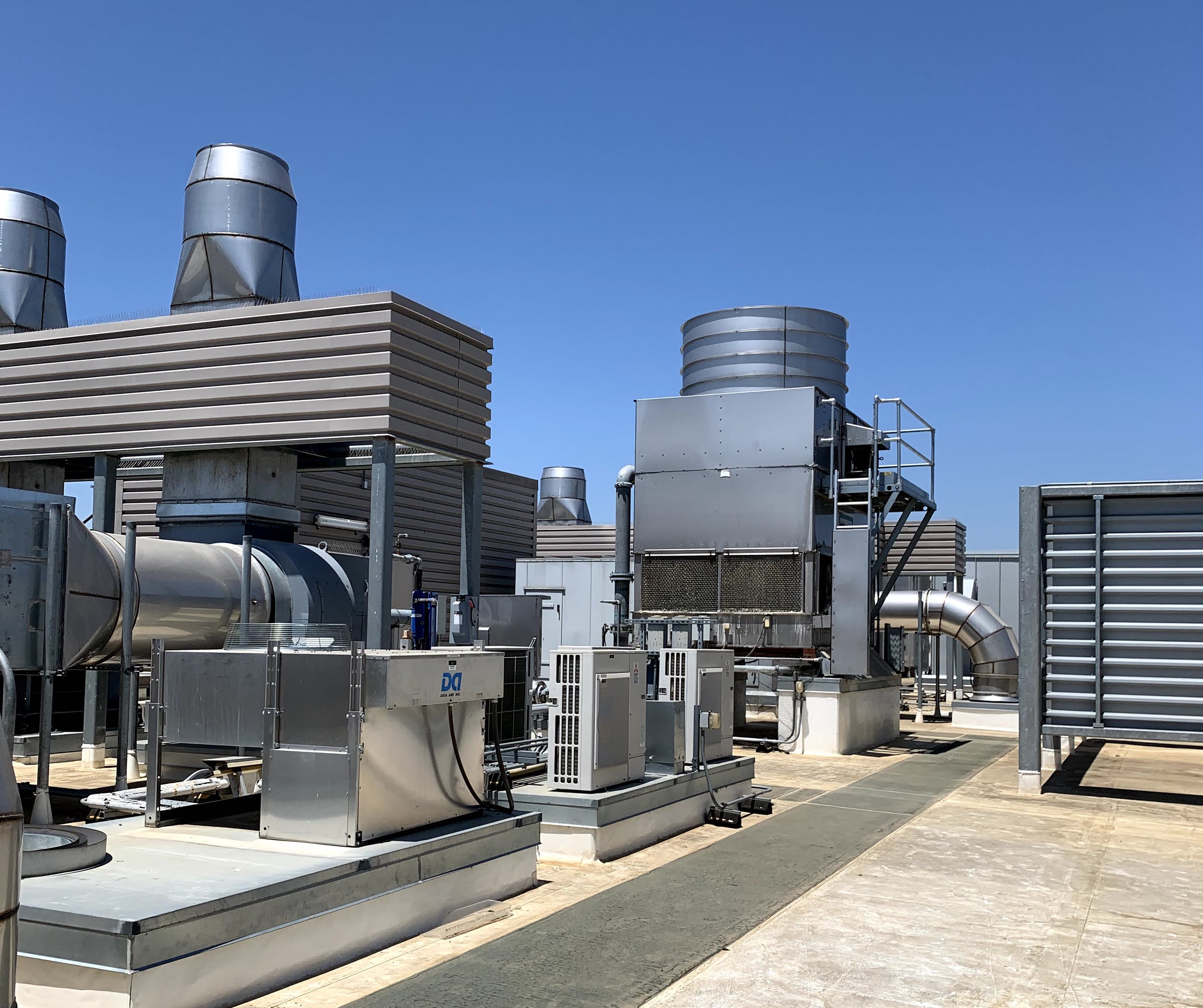
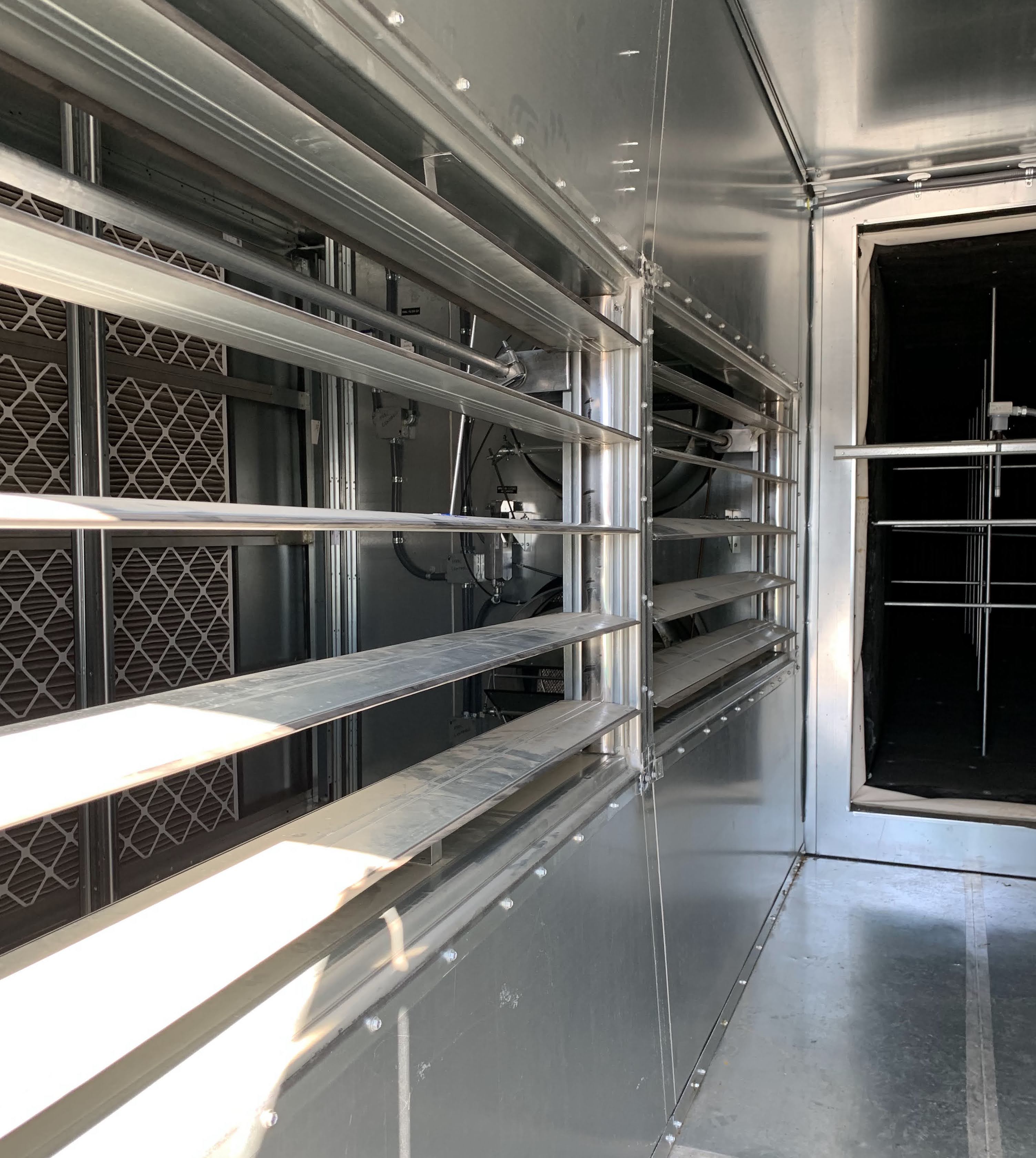
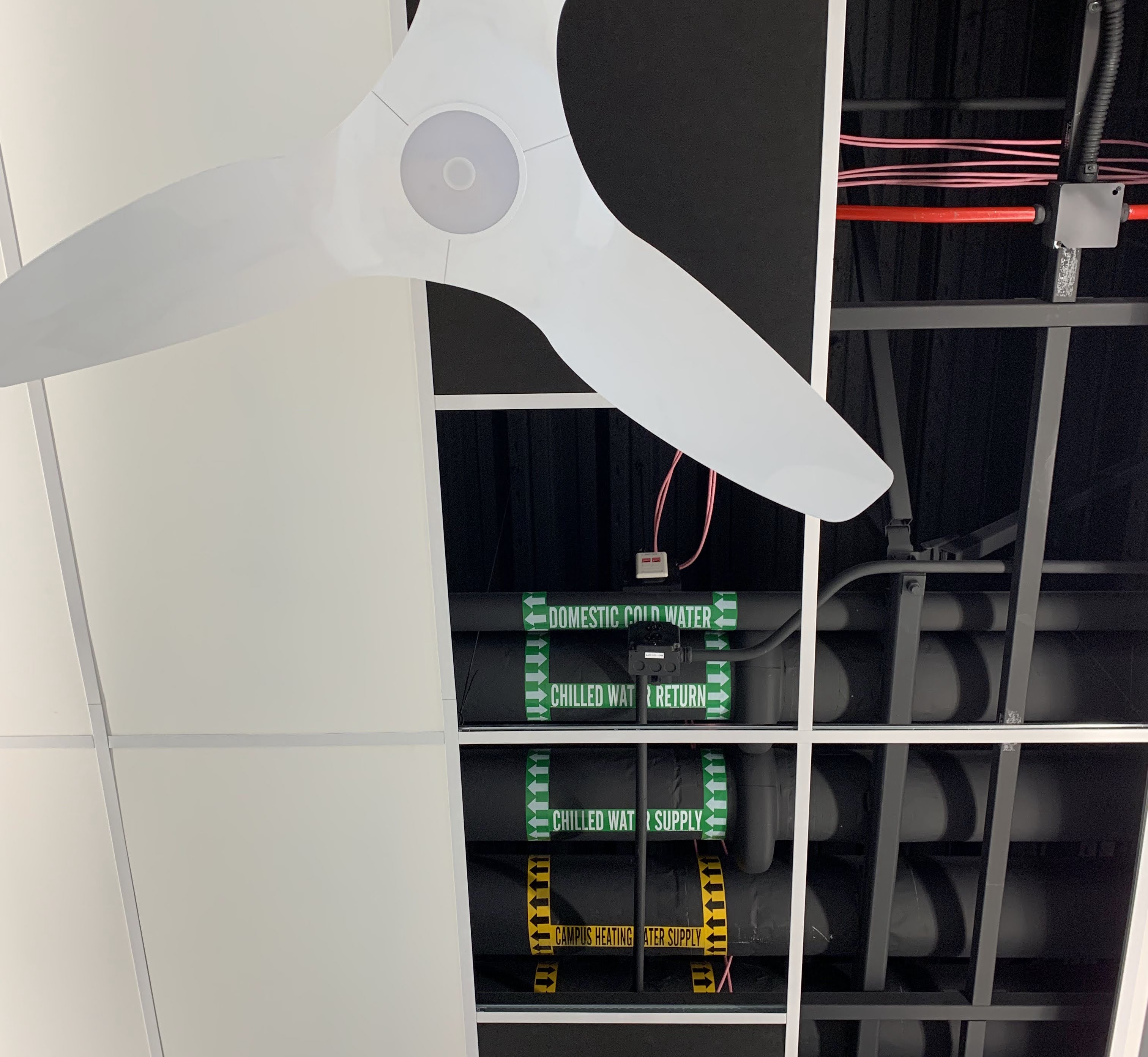
Air Handlers
Centralized systems are common in larger buildings, and have an air handler that serves part of or the whole building. These types of systems are very common on our University campus, but you may not see them often when doing audits of small to medium-sized commercial buildings.

VAV Boxes
An air handler supplies conditioned air to the rooms in a building. Some buildings supply a fixed volume of air into a room. A variable air volume (VAV) box allows variable air volumes into a space, and provides better control of the room temperature and comfort.
VAV boxes have a damper that opens and closes to control the amount of air entering the room. Some VAV boxes also have a reheat coil, which is able to heat the air from the air handler before it goes into the room.
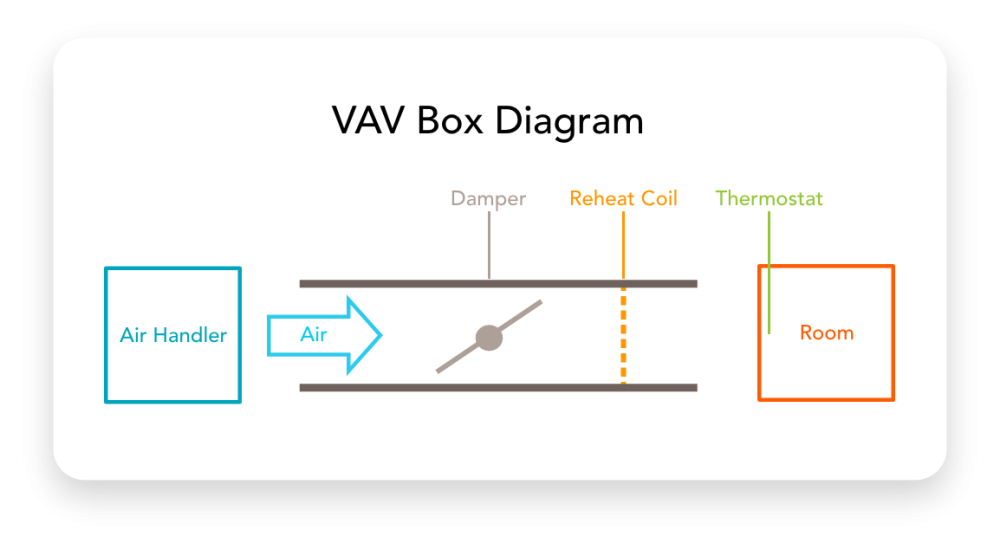
The controller communicates with the damper to determine the position and the amount of air that goes to the room. It also communicates with the reheat coil to determine if the air from the air handler needs to be heated to meet the thermostat’s set points.

Some VAV boxes have a reheat coil. If a room needs to be heated, a valve opens to allow heating water to flow through the reheat coil which reheats the air that passes through the coil. The controls that monitor air flow and heating coil are normally linked to the room's thermostat. The controller communicates with the damper to damper to determine the position and the amount of air that goes to the room. The controller also communicated with the reheat coil to determine if the air from the air handler needs to be heated to meet the thermostat's set point for the room.
What's the benefit of digitally controlled HVAC systems?
Digital controls allow our team to adjust room temperature set points, airflow, and/or program schedules remotely from our offices on campus. Visibility into campus buildings' Heating, Ventilation, and Air Conditioning (HVAC) systems through digital controls allows the engineering team to schedule buildings to turn down over holidays and weekends when spaces are unoccupied. They also allow us to fine-tune the HVAC controls to find comfort solutions that satisfy both comfort needs and energy efficiency.
[insert image here]
The majority of campus buildings have digital controls and can be seen remotely, but over 100 smaller buildings across campus are part of a SWARM program. SWARM (Small Workplace Automation & Remote Monitoring) places wifi-connected thermostats in isolated buildings so they can be monitored remotely. When HVAC controls are limited in a building and we can't remotely see what's happening with the HVAC system, a Facilities technician visits the space to troubleshoot and address all work requests. Compare an HVAC system with a central control system to one not connected to a control system below.
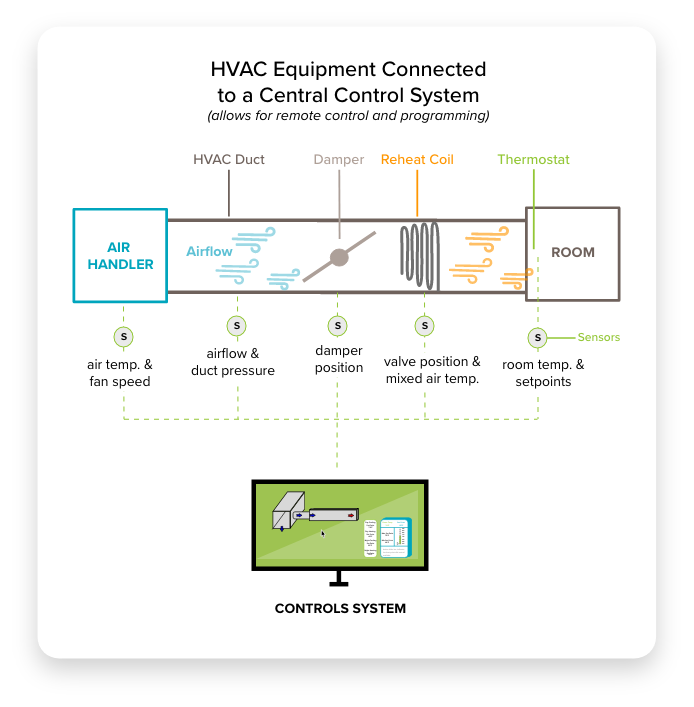
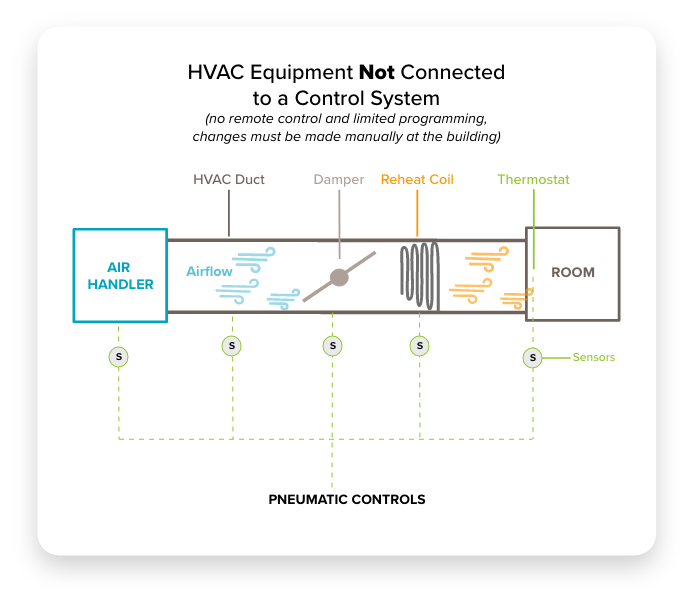
Topics In this Section
- Key Terms In This Section
- Air handlers: supplies conditioned air to the rooms in a building.
Reheat coil: reheats air that passes through the coil.
Controller: communicates with the damper to determine the position and the amount of air that goes to the room.

